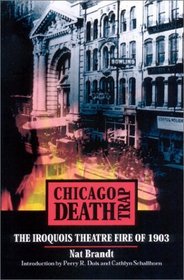Search -
Chicago Death Trap: The Iroquois Theatre Fire of 1903
Chicago Death Trap The Iroquois Theatre Fire of 1903
Author:
On the afternoon of December 30, 1903, during a sold-out matinee performance, a fire broke out in Chicago’s Iroquois Theatre. In the short span of twenty minutes, more than six hundred people, two thirds of whom were women and children, were asphyxiated, burned, or trampled to death in a panicked mob’s failed attempt to escape. A cen... more »
Author:
On the afternoon of December 30, 1903, during a sold-out matinee performance, a fire broke out in Chicago’s Iroquois Theatre. In the short span of twenty minutes, more than six hundred people, two thirds of whom were women and children, were asphyxiated, burned, or trampled to death in a panicked mob’s failed attempt to escape. A cen... more »
ISBN-13: 9780809324903
ISBN-10: 0809324903
Publication Date: 2/14/2003
Pages: 240
Rating: 2
ISBN-10: 0809324903
Publication Date: 2/14/2003
Pages: 240
Rating: 2
3.8 stars, based on 2 ratings
Publisher: Southern Illinois University Press
Book Type: Hardcover
Other Versions: Paperback
Members Wishing: 4
Reviews: Amazon | Write a Review
Book Type: Hardcover
Other Versions: Paperback
Members Wishing: 4
Reviews: Amazon | Write a Review
Genres:
- History >> Americas >> United States >> 20th Century >> General




